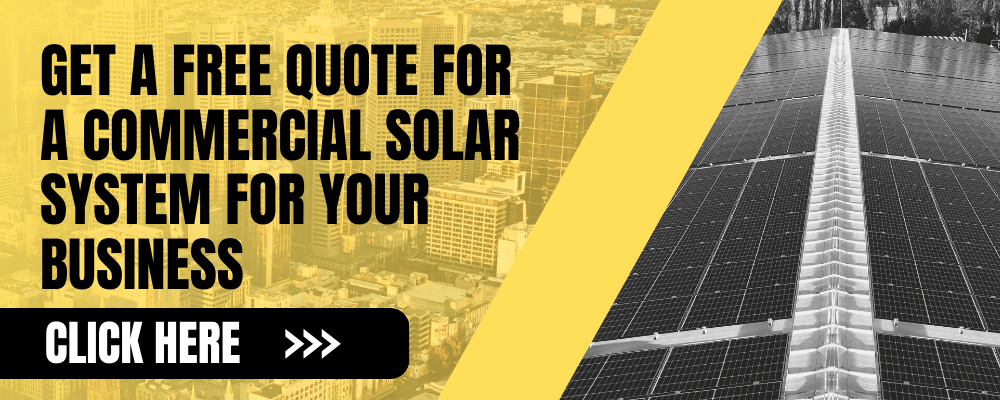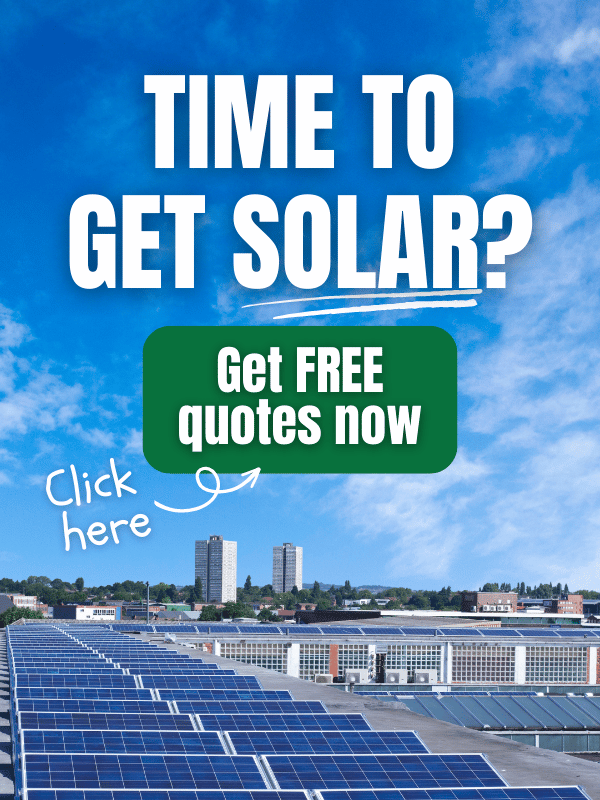
In the solar industry, panel efficiency has traditionally been the element in which most manufacturers have aimed to excel. Traditional commercial and residential panels have also increased in size and power, with 400W to 500W panels now being the standard.
However, a new race for the world’s most powerful solar panel has begun, with many of the industry’s largest competitors announcing larger format next-generation panels with power ratings far beyond 600W. solar panels to learn tips and choose the best solar panel..
On This Page
A 600 watt solar panel power and its use
The amount of power 600w solar power systems can support is determined by various factors, including the time of year, the weather, the location, and the type of charge controller you install.
Designed for large-scale systems
The goal is to minimise the cost of utility-scale solar farms; ultimately, electricity rates are the primary incentive for producing larger, more powerful solar panels. Because larger panels require the same connections and labour as smaller panels, the installation cost per kW is cheaper, resulting in a lower overall cost and a Levelized Cost of Electricity (LCOE).
The new high-powered panels are substantially larger than those used on residential rooftops. Those hoping to install a dozen 600W panels on their home rooftop to generate an easy 7kW will be disappointed. Most high-powered panels will be available only for commercial and utility-scale systems at this time, and the extra-large size is unsuitable for and challenging to handle on most residential rooftops. But, where rooftop real estate is a precious commodity for commercial properties, larger panels can reduce the overall number of panels required for a commercial system, thus reducing the space needed.
RVs or campervans
A solar system can use 600 watts for a small family in an RV. It can support wild camping in an RV all year round if battery levels are carefully monitored. It can also be used to power a campervan with solar energy. A solar system of that size should provide enough electricity for four adults comfortably.
Here’s an example of what you might expect from an MPPT controller on an average day with four peak hours of sunlight. A 600 watts solar panel system will supply between 180 and 192 amp hours per day. This is based on an average sunny day:
- keep a composting toilet’s fan running 24/7,
- run a diesel heater during winter,
- switch on LED lights inside the campervan,
- a power inverter for a TV, charging laptops and a coffee maker,
- Run a good-sized, energy-efficient fridge,
- recharge plenty of small devices on a USB like phones, tablets and kindles, and
- run your roof vent during the day and night to stop condensation.
Larger solar panel sizes
Due to advances in solar cell technology, the main driver is the development of larger cell sizes with a higher number of cells per panel. Because of the new cell formats and configurations, the new panels are physically larger.
Large panels are best suited for utility-scale solar farms or commercial installations.
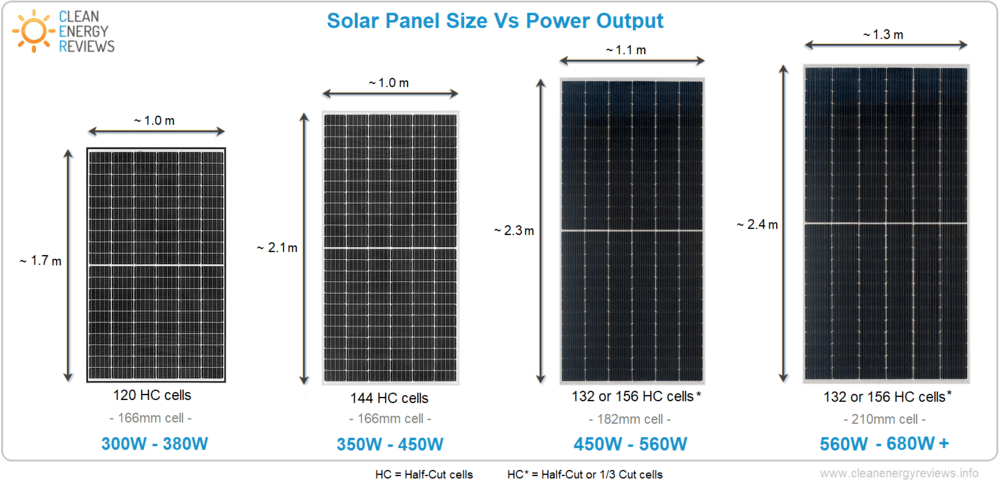
Solar panels were formerly available in two sizes: the regular format 60 cell panels (about 1.65m high × 1m wide) used for residential rooftops and the larger format 72 cell commercial scale panels (roughly 2m high x 1m wide). Then half-cut cell panels of approximately the same size appeared but with double the number of half-size cells (120 cells and 144 cells). Aside from the usual sizes, a few premium manufacturers, such as SunPower, produced one-of-a-kind 96 and 104 cell panels.
For much of the last decade, the industry-standard panel size was 156mm x 156mm or 6-inch square cell format. The new panel sizes, up to 2.4m long and 1.3m broad, are based on the larger 180 and 210mm wafer sizes. This represents a size increase of 20% to 30% over traditional 2.0m x 1.0m 72-cell panels, which naturally corresponds to a significant increase in power per panel.
The 600 watt solar panel manufacturers
Several major solar panel manufacturers sell up to 600 watts or slightly higher solar panels for residential and commercial use. It is listed alphabetically.
JinkoSolar Tiger Neo
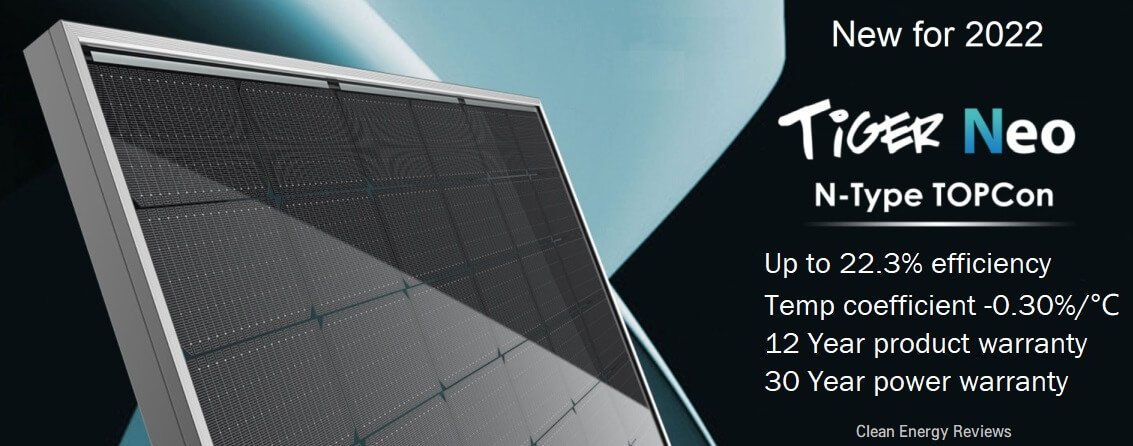
Based on high-performance TOPCon cell technology, the Tiger Neo series is the most recent addition to Jinko’s panel lineup. TOPCon cells, created with a high-purity N-type cell substrate, are gradually becoming the new industry standard due to their higher efficiency than normal Mono PERC cells made with a P-type substrate. The Neo panels range from 460W to the much bigger, high-power 620W panels ideal for large-scale solar farms. Because of the high-density cell shape and high-performance N-type TOPCon cells, maximum efficiency is an outstanding 22.3%. The NEO series comes in various sizes for various applications, including 54, 60, 72, and 78 cell formats.
- Power (W): 620W
- Cell Size: 182mm
- Cell Type: N-Type TOPCon
- Efficiency: 22.3% (as of July 2022)
SunTech Ultra X Plus
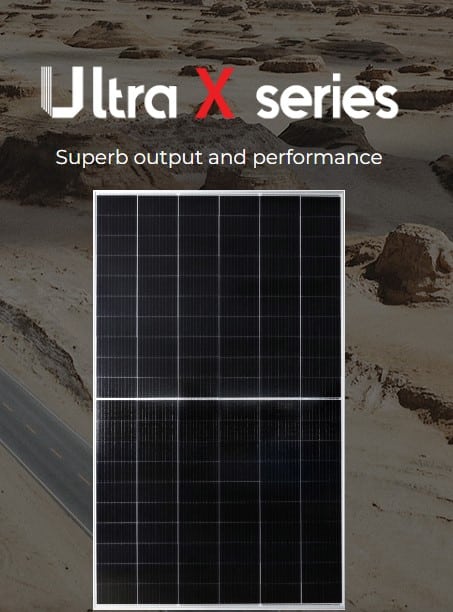
Based on the 210 mm large format silicon wafer and PERC monocrystalline cell, increased light receiving area by 80.5% compared with the 156mm cell, the conversion efficiency is greatly improved. The bifacial layout brings excellent power, the power generation on the back side brings more gains, and the maximum generation gain is up to 25%.
- Power (W): 670W
- Cell Size: 210mm
- Cell Type: P-Type Mono PERC, Bifacial
- Efficiency: 21.6% (as of July 2022)
Trina Solar Vertex
The Vertex solar module, which is based on a 210mm large-size silicon wafer and a monocrystalline PERC cell, has various revolutionary design features that allow for a high power output of more than 600W. Furthermore, by integrating square mono cells and high-density encapsulation technology, the Vertex solar modules may achieve up to 21.6% efficiency.
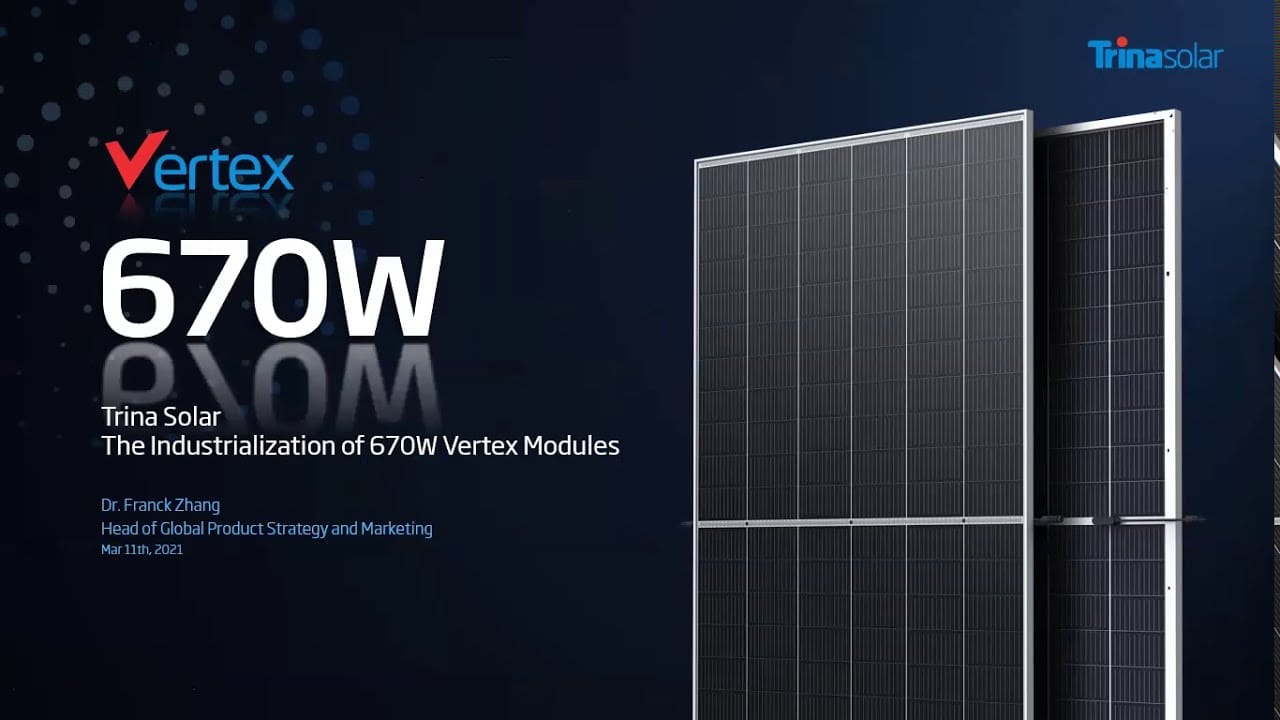
- Power (W): 670W
- Cell Size: 210mm
- Cell Type: P-Type Mono PERC
- Efficiency: 21.6% (as of July 2022)
Energy Matters has been a leader in the renewable energy industry since 2005.
Contact us for up to 3 FREE quotations from commercial solar firms we’ve pre-qualified and vetted for their track record of delivering the best business solar systems in Australia.
Complete our quick quiz and begin your solar journey for your business today!








